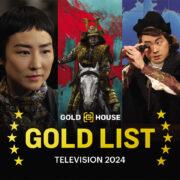Animating ice is complicated.
And when it came to working on “How to Train Your Dragon 2,” that was a challenging part.
“Ice is particularly difficult because it has a very complex lighting model,” said Lawrence Lee, head of effects for the film. “So we have to make sure when we crack it—before we crack it and after we crack it—that it reacts to light correctly.”
In May of this year, “How to Train Your Dragon 2” continued the story of the heroic Viking Hiccup and his dragon Toothless, based on the identically titled book series by Cressida Cowell. The movie, which was produced by DreamWorks Animation, made more than $500 million at the global box office.
It is also this year’s highest grossing animated film to-date.
Lawrence worked with more than 40 others to create the animation in “How to Train Your Dragon 2,” including Domin Lee, lead effects artist of the movie, who worked mainly on scenes involving fires and explosions.
While animating ice was a big obstacle in the project, Lawrence cited three other hurdles in working on the film.
Making the effects believable was one of them. Both animation artists screened footage of explosions, fires, drips, and even styrofoam melting to help them with the process. But in this case, because dragons don’t actually exist, animators had to bend physics to generate stylized effects that can’t be seen in the real world.
“If you have a flying dragon that breathes fire…you want the audience to believe that’s how a dragon would do it,” Lawrence said.
Another challenge was working with how big everything was. For one, the alpha dragon in the movie was scaled to a height of 160 feet.
Interactions with lighting were also a road bump.
“We have characters falling in water, interacting with it, and pushing objects around. We have fire that would act as a light source [and] light up the environment…. All of these posed big challenges for us,” Lawrence said.
But even with all the elbow grease it took to animate “How to Train Your Dragon 2,” the effects had to take a back seat to ensure the focus remained on the storyline.
“A lot of times it’s easy to just simulate [movements] and put that onto the shot, but we always have to think about the composition and the design of the shot, and try to not [let it] affect the story,” Domin said.
(www.asianjournal.com)
(LA Weekend November 29 – December 2, 2014 Sec. D pg.1)
- The Weight of Stardom, the Lightness of Being: Sharon Cuneta’s Quiet Transformation
- From “Hungry City” to co-chief critic at the New York Times – A Filipino American voice redefines food journalism
- Pradash M. Manimba’s The Heartbeat of a journalist: The Inspiring Journey of Rogelio Constantino Medina
- New York City’s Ranked-Choice Voting Returns
Back To Top






